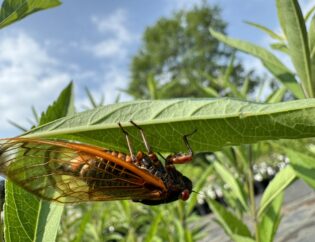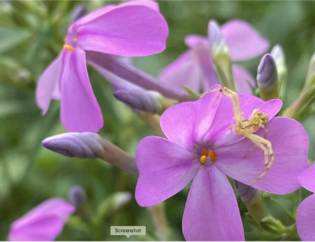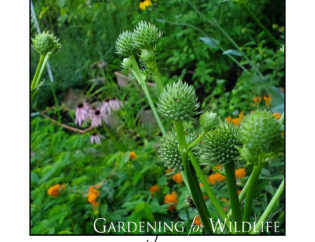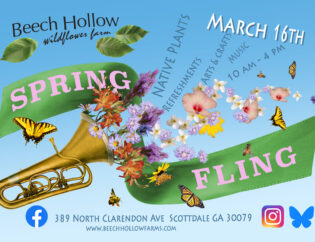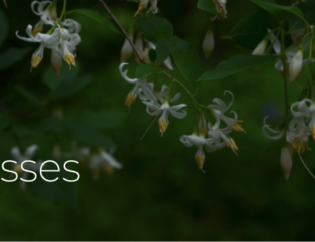As we were walking the propagation beds a few weeks back, Pandra and I approached a patch of about 8-10 milkweed plants (Asclepias tuberosa) and she said “Oh no!” Only one was still green, and all that remained of the others were brown dried out stems with a few dead leaves still clinging to the ends. It looked a little like this:
 We started to discuss what could have caused all these plants to die off and whether or not it was the same beetles that took out nearly all of our Coreopsis last spring. I said that I’d seen a Monarch butterfly caterpillar feeding on one of those plants the week before, and maybe they were the cause? We took a look at another patch of milkweed plants and saw essentially the same thing, dead crowns on all the plants except one. The one remaining green plant in this patch had three monarch caterpillars feasting on the leaves. I didn’t get a picture, but they had obviously come from the plants with the dead crowns, as this last green plant was the farthest down the line. We both said “well, that’s why we grow milkweed” and hoped that the crowns would re-sprout in the spring.
We started to discuss what could have caused all these plants to die off and whether or not it was the same beetles that took out nearly all of our Coreopsis last spring. I said that I’d seen a Monarch butterfly caterpillar feeding on one of those plants the week before, and maybe they were the cause? We took a look at another patch of milkweed plants and saw essentially the same thing, dead crowns on all the plants except one. The one remaining green plant in this patch had three monarch caterpillars feasting on the leaves. I didn’t get a picture, but they had obviously come from the plants with the dead crowns, as this last green plant was the farthest down the line. We both said “well, that’s why we grow milkweed” and hoped that the crowns would re-sprout in the spring.
Fast forward two weeks and I’m out at the front beds again checking to see if seeds had ripened on some of the sunflowers. A Monarch butterfly floated by on the breeze. Then another one caught my eye flying down to the other end of the bed. Fortunately I had my camera.
This is a newly hatched Monarch feeding on the nectar of a Georgia Aster flower. This is also a good example of why you need butterfly host plants AND flowering nectar plants to support a healthy population of butterflies in your garden. If this butterfly had hatched and there was no food in the area she might have perished, but there were multiple species of plants flowering within 30 yards of the milkweed so she had plenty to eat. Hopefully it provided a good first meal for the incredible journey to Mexico or South Florida that this lady is about to embark upon.
That’s fine and well for the butterflies, but what about our poor milkweed plants? I went to check on their roots and to my surprise I found this:
Already sprouting new growth! All of the plants with dead crowns were putting up some form of new growth, and most of it looked larger and greener than the growth that the monarchs devoured. The milkweeds abandoned their crowns as a result of the siege, and then after the caterpillars left and pupated they simply sprouted new stems. Host plant/insect relationships are so complex and fascinating. Almost as fascinating as how successive generations of butterflies know how and when to migrate thousands of miles to a place they’ve never been, but that’s another post. Until then……
Happy Trails!



